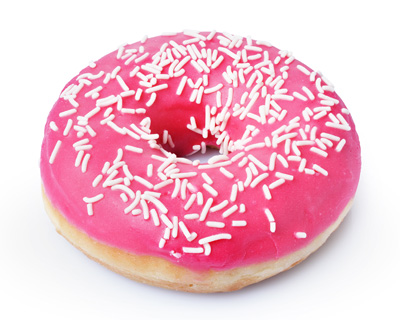So … you may have heard by now. California has proposed to ban the use FD&C Red #3 in foods and beverages. The ban is intended to go into effect in 2027.
Red #3 is a relatively popular food colorant because of its unique pink shade. It has been popularized over the years in confectionary products like “Skittles®”, and the new proposed ban has been labeled “the Skittles® ban” by skeptics. Another reason for the popularity of Red #3 is that, in combination with Blue #1, it can be used to give a popular shade of purple (popular with dinosaur costume lovers, anyway).
It should be noted that the toxicology experts at the FDA (the folks responsible for ensuring the safety of our food supply) have repeatedly reviewed the data on the health effects of Red #3. Food Color manufacturers and users have funded extensive studies to affirm the safety of its use. To this day, the FDA supports the continued use of Red #3, and has refused requests by certain “public interest” groups to ban its use.
The same can be said for titanium dioxide, a widely used whitening agent in the food industry. California decided to drop its inclusion in the most recent announcement, despite the efforts to include it in this most recent banning. The existing evidence simply doesn’t support such treatment.
In my experience with the food industry, dating back a minute, nobody in the food industry is interested in taking a chance on harming consumers with anything present in their products. The bans are sometimes treated with skepticism, but they are always taken seriously. This one will be no different.
Of course, this leaves the dilemma … how to replace Red #3 in the US food supply. Are there other red colors? Yes, indeed. Both synthetic and natural red color options exist and are approved by the FDA for use in foods and beverages. Unfortunately, as hinted at in the opening paragraph, Red #3 produces a unique pink shade that has not successfully been matched. There are colors that come close, but in general the differences are noticeable, if not pronounced.
The food scientist’s best friend in situations like this is a knowledgeable, experienced color scientist who can provide effective guidance toward a workable solution. Natural colorants are, in general, more temperamental in use than synthetic colorants. This often means that a solution that works in one application cannot be transferred successfully to another. We are here to help you with your color challenges … helping you find reliable and effective solutions for your applications.
At the Color Lab, we have the expertise, experience, and portfolio of products to assist you with the challenge. We invite you to visit our web site, read our customer commitment, and discuss your challenge with us. We are looking forward to hearing from you.








